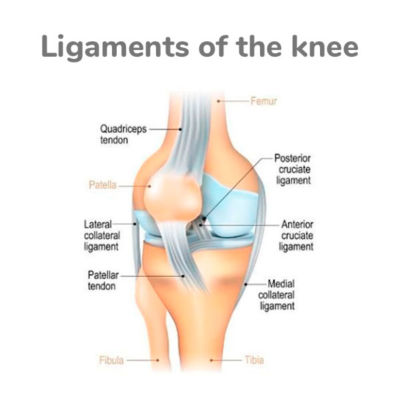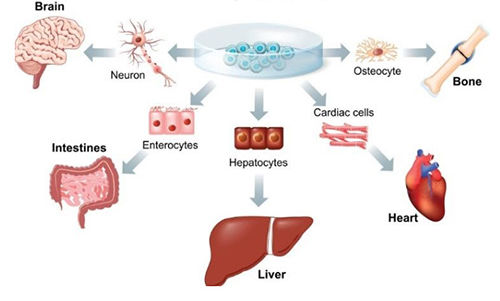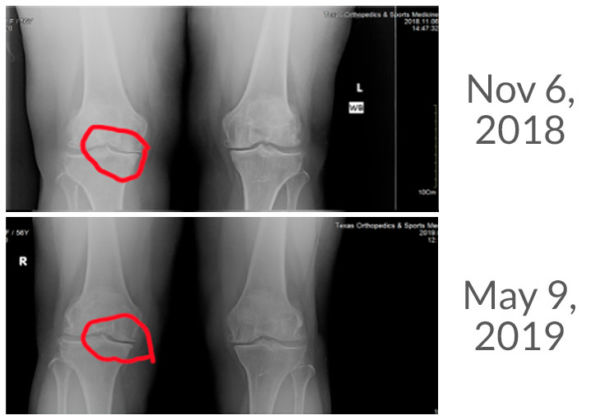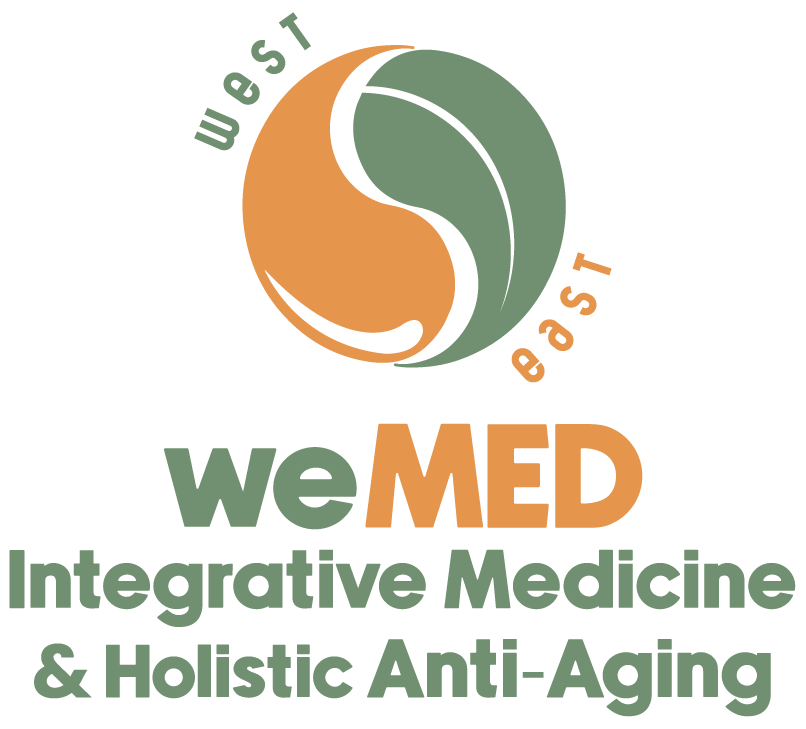FACT: Roughly 25% adults suffer from frequent knee pain and limited knee function while most knee pain is caused by osteoarthritis over the age of 50.

1. Knee Structure and Osteoarthritis
The knee’s basic structure is formed by the lower end of the femur and the upper end of tibia, and is stabilized by the enforcement from the huge patella ligament on the front side of the joint, the anterior cruciate ligament, and also by the posterior ligament in the joint and the lateral and medial collateral ligaments on the outside of the joint.
Knee osteoarthritis is caused by chronic wear and tear, trauma, or damage to the ligaments, resulting in thinning or destruction of the meniscus and articular cartilage. The changes can be measured or seen from X-ray or MRI pictures. Due to the loss of cushion and lubrication, the joint becomes very inflamed. The pain could be so severe that the patient has to stop exercising, or take frequent breaks during walking or standing. Many patients could not enjoy out-door activities, such as dancing and playing with grandkids, etc.
2. Conventional Treatment
Conventional treatments include steroid shots, painkillers and/or non-steroid anti-inflammatory drugs. The patient may receive between 4-12 hours of relief from medications and will usually need to repeat the medication within 24 hours. Most of these kinds of medications will cause damage to the digestive lining, and/ or liver or kidney damage if taken regularly. Another group of medications, such as Celebrex and Vioxx, were less GI toxic, but after being on the market for ten years, the FDA now warns that this group of medications may cause heart attacks and strokes.
3. Integrative Treatment
Physical therapy can strengthen the muscle and ligaments to help stabilize the joint. Massage, acupuncture, cupping, and Chinese herbal formulas can help effectively reduce pain by alleviating swelling and inflammation. However, none of the above modalities can regrow the lost cartilage.
4. Regenerative Medicine
Research has found that Regenerative Medicine from your own bone marrow or umbilical cord tissues can be an effective treatment for knee pain. weMED Clinics and Regenerative Medicine Center utilize evidence-based Eastern and Western medicine and regenerative medicine, which has resulted in many of our patients successfully regrowing their own cartilage. The following three example cases show the significant growth of cartilage and how we have helped our patients avoid surgical procedures.

1) Case 1: Akir, 52 years,
Akir came to us suffering from diabetes with an HA1C of 9.7 and osteoarthritis in both of his knees. Four months after the weMED regenerative medicine injection, the pain in both of his knees has disappeared, and his HA1C is down to from 9.7 to 6.2 (and now 5.4) meaning his diabetes is gone. Watch his report here:
2) Oscar has gained function back in his knee from the cartilage regrowth shown in the x-rays by the increased space in the joint:
weMED Health Patient

3) Case 2, Ms. Flor, age 56
Ms. Flor came to us suffering from Stage III-IV osteoarthritis in her right knee. The X-ray shows significant growth of cartilage only 6 months after Regenerative Medicine.
weMED Health Patient Avoided Surgery!
Cartilage Regrowth in OA with Umbilical Cord Cell

4) Case 3, Manuel, age 76
Manuel came to us with Stage III-IV osteoarthritis in both knees. Using Regenerative Medicine, weMED was able to alleviate his pain and regrow cartilage in only 4 months.
Conclusion: Regenerative Medicine represents the future of medicine. weMED’s signature integrative medicine approach using acupuncture to complement the Regnerative Medicine enhances our treatment’s effectiveness.
Looking to avoid Knee Replacement Surgery in Houston, TX? Call us today 713-572-3888




